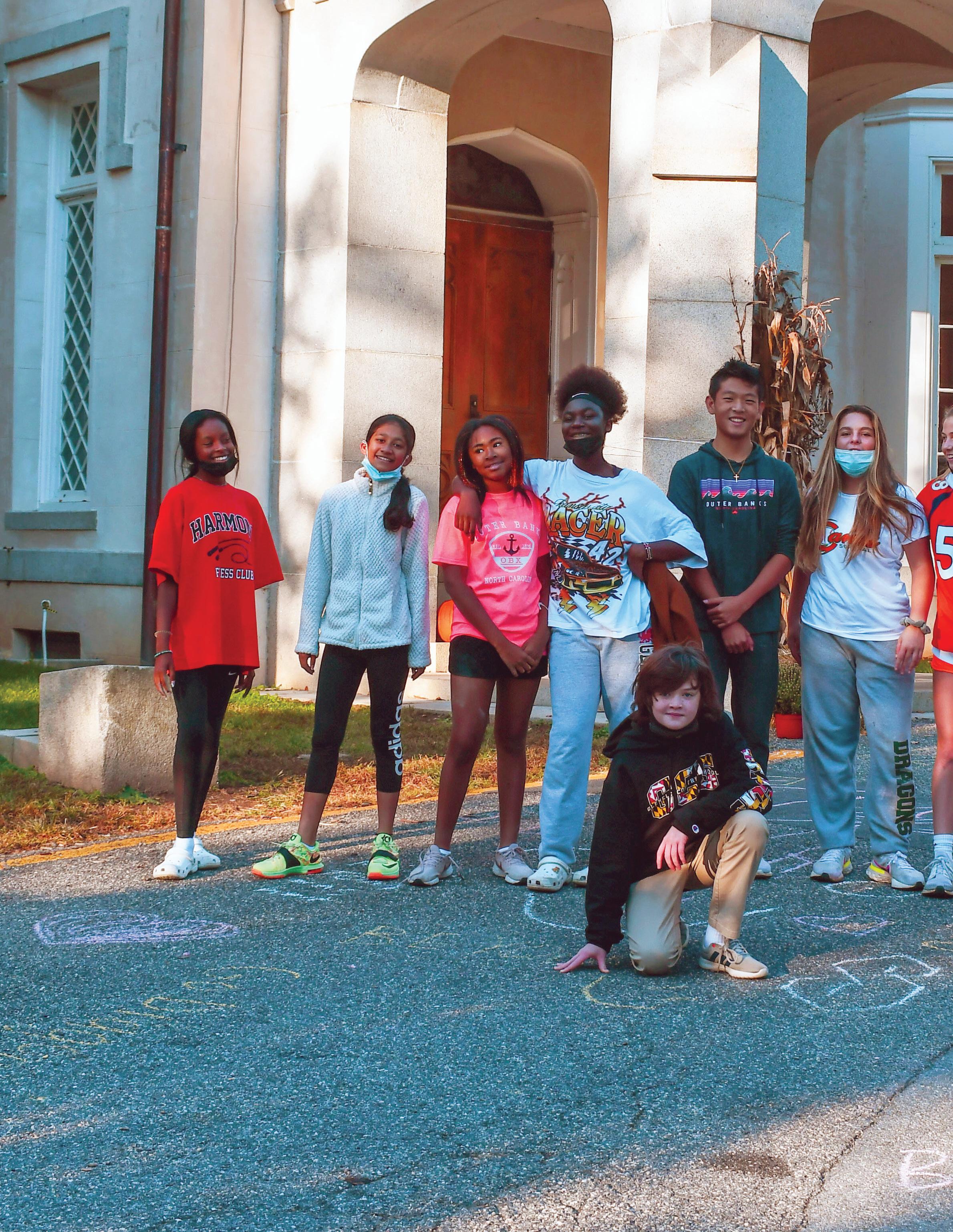
9 minute read
MIDDLE SCHOOL
A PRUDENT YEAR
THE MIDDLE SCHOOL’S PRINCIPLES ARE A FOUNDATION.
By Kevin Boland
HEAD OF MIDDLE SCHOOL
We’ve all heard stories about lottery winners who come to ruin—it happens. Yes, some are smart with their winnings and enjoy an improved quality of life. Still, just as often, people who suddenly find themselves with enormous resources and many options end up making terrible decisions. It can be perplexing and heartbreaking. If not grounded by a guiding philosophy, unable to make adjustments along the way, money and success can lead to bigger and bigger mistakes.
Has the Middle School been getting it right during the past year? When easy answers are hard to find—where there are no winning lottery tickets—we continue to look first to principles for guidance: care for our students, helping them become their best selves, and preparing them to enter the wider world. And, during the pandemic, keep them safe while also keeping them in school, in an academically challenging environment conducive to their social and emotional growth. To look at it another way, planting and cultivating the same seeds we’ve always planted, just in a different way.
So much information has come at us that it is hard to separate the signal from the noise. We strive to apply sound judgment to do what we think is best for each division’s students, parents, and teachers. There is no one-size-fits-all, so we avoid the idea that there is one magic answer or total solution that will be perfect for everyone that gives us the slight edge. Instead, the little things implemented incrementally, chosen deliberately, and executed safely allow us to keep our doors open and our students on campus for the GCS experience. It isn’t perfect or above criticism, and we sometimes have to take steps backward, but we always strive to identify what is in the best interests of our students and families, listen to feedback, and move with care.
Here we are, a year and a half later. This year is better than the last, and last year was better than the end of the one before when the pandemic started. Perhaps we are that prudent lottery winner. We haven’t squandered our winnings, we’ve moved cautiously and conservatively, and we continue to adapt and improve the quality of our students’ educational experience. And we do this knowing there are still challenges ahead. Variants remain a concern. So we continue to be cautious, remaining socially distant when possible, properly wearing masks, and encouraging vaccination. But we are also inching toward normal. The quality of life students enjoy is a result of our careful strategy, the hard work of our faculty, and the cooperation of our students and families. It is also a consequence of the strong community bond we’ve forged over many years, allowing us to reap what we planted and cultivated for so many years before this.
DEAN, TEACHER, AND MORE
BRITA STEWART’S IMPACT MAKES A DIFFERENCE.

In the book, I’m Still Trying to Figure It All Out Myself, author Larry Cohen writes about the importance of selflessness. Some individuals inspire others and brighten the environment around them. Some are selfless, caring deeply about those around them. With this in mind, one name in the Middle School bubbles to the surface: Brita Stewart.
Stewart, dean of students, is exceptional for not only how she approaches her duties, but that she does so with humility and without seeking recognition. Kevin Boland Sr., head of the Middle School, notes that Stewart truly cares about every person in the division. “Whether student, parent, or coworker, Stewart attends fully to each and responds with warmth, humor, and excellent advice.”
It’s this quality that ensures every person in the building feels heard and valued. “Her empathy and flexibility as a mentor and teacher have facilitated an environment within the Middle School that allows students and teachers to feel welcome, supported, and comfortable even when the only connection was a Microsoft Teams meeting with ‘Brady Bunch’-style boxes,” says Boland. He notes that Stewart’s empathy is evident in her words and actions. “Brita’s constant calm and even-keeled nature has helped maintain a safe and positive environment every day.”
Without a doubt, Stewart is dedicated and works hard. Teachers may receive emails and occasional texts at unusual hours, but Stewart will respond regardless of the time. “Why is she checking email at 5:17 am?” chuckles Boland.
Stewart’s priority is providing the best experience for students, and she is deliberate and thoughtful in her decision-making. She will bounce ideas off coworkers and solicit feedback. Stewart can be counted on to solve problems and find solutions. Her knack for combining logic and practicality with creativity delivers solutions that work best for students and teachers alike. Stewart will spend an extra hour talking out an idea with colleagues. She follows up.
Balancing tradition with innovation is another quality she exhibits. Because Stewart attended Glenelg Country School through the eighth grade and has been at the school for so long, she understands and holds to the school’s traditions important to the institution. At the same time, she is driven in her profession, constantly seeking out new and innovative strategies to bring into her classroom. “Whenever Brita and I discussed a problem that involved teaching remotely or in the hybrid format during the pandemic, there was never an absence of ideas or solutions. She never once said that something could not be done or that it was impossible to overcome a challenge,” Boland says.
“Whether it was coming up with an academic schedule with 75-minute block periods or restructuring classes so a classroom had no more than 10 students, Brita always found a way to innovate and compromise so that it worked.” For Stewart, improvement is always possible, and new ideas—which lead to solutions—never stop flowing.
Ultimately, the most important stakeholders in the division are the students. And Stewart is student-centric. She encourages student involvement and ownership of their learning. She invests in the success and well-being of every student, discovers what is unique about every student, and tells them. Students’ concerns are her concerns. She fosters their excitement about the school experience.
Alumni still remember how important their experiences in eighth grade English were, not just as they grew as students but how they are as human beings.
Samantha Weinstein ’11, now a full-time substitute teacher in the Middle School herself, credits Stewart for taking her writing skills to the next level. “I remember getting my first high school writing assignment. I pulled out my eighth grade English folder and reread all of Mrs. Stewart’s feedback on my work.”
“Rereading her feedback, I realized I was overthinking the Upper School assignment,” says Weinstein. “She made me feel confident and prepared, even months after sitting in her classroom. Mrs. Stewart helped me find the self-assurance I lacked, which I still remind myself of in moments of doubt.”
Described by colleagues as a genuine and generous leader, Stewart’s perseverance is seen as a comfort. Says Boland, “Brita has a way of drawing you in, encouraging you to engage, and making you believe. She does this with purpose and humility. While many of us remain in the ‘I’m still trying to figure it all out myself’ stage, one of us seems to have already figured it out.”
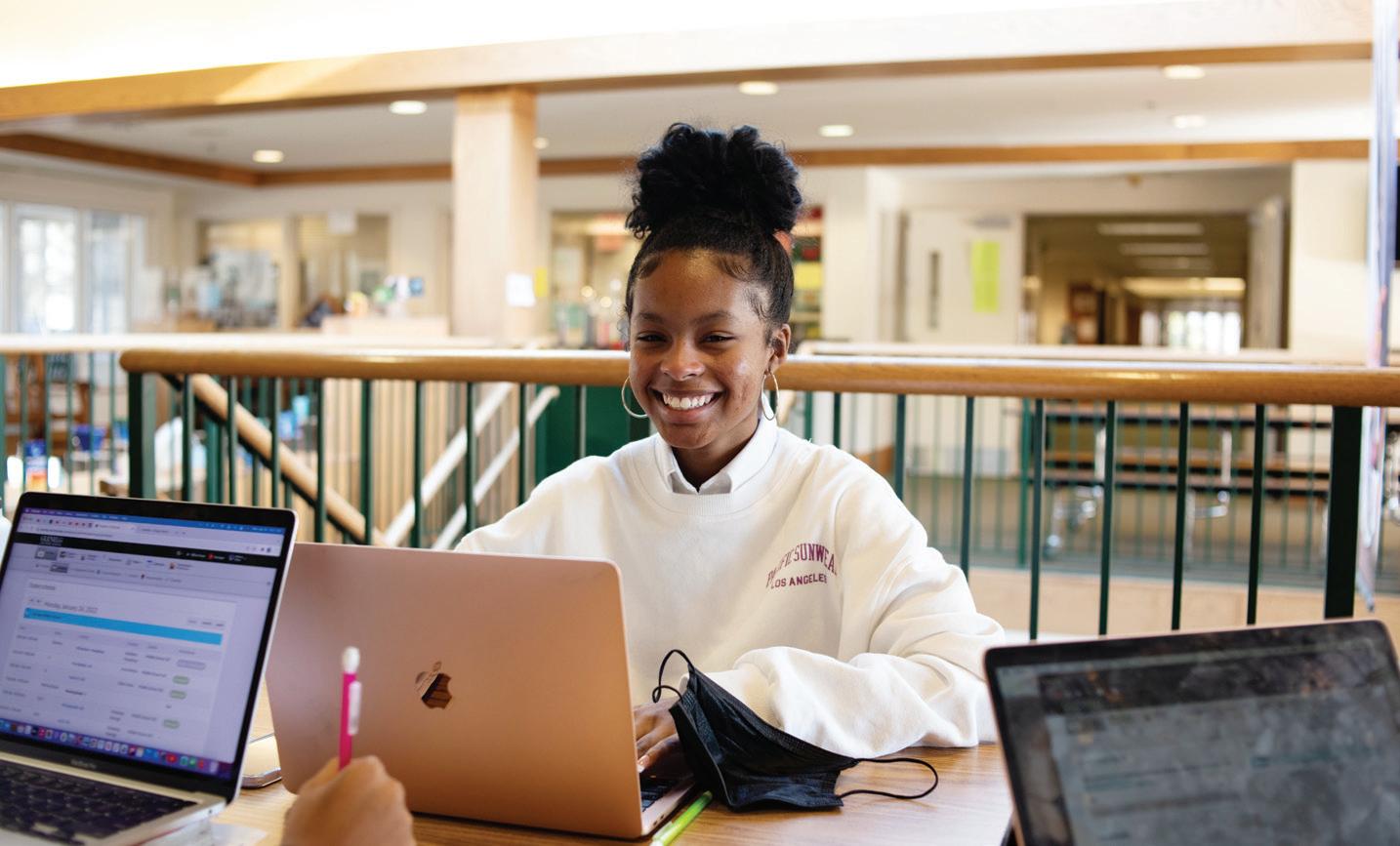

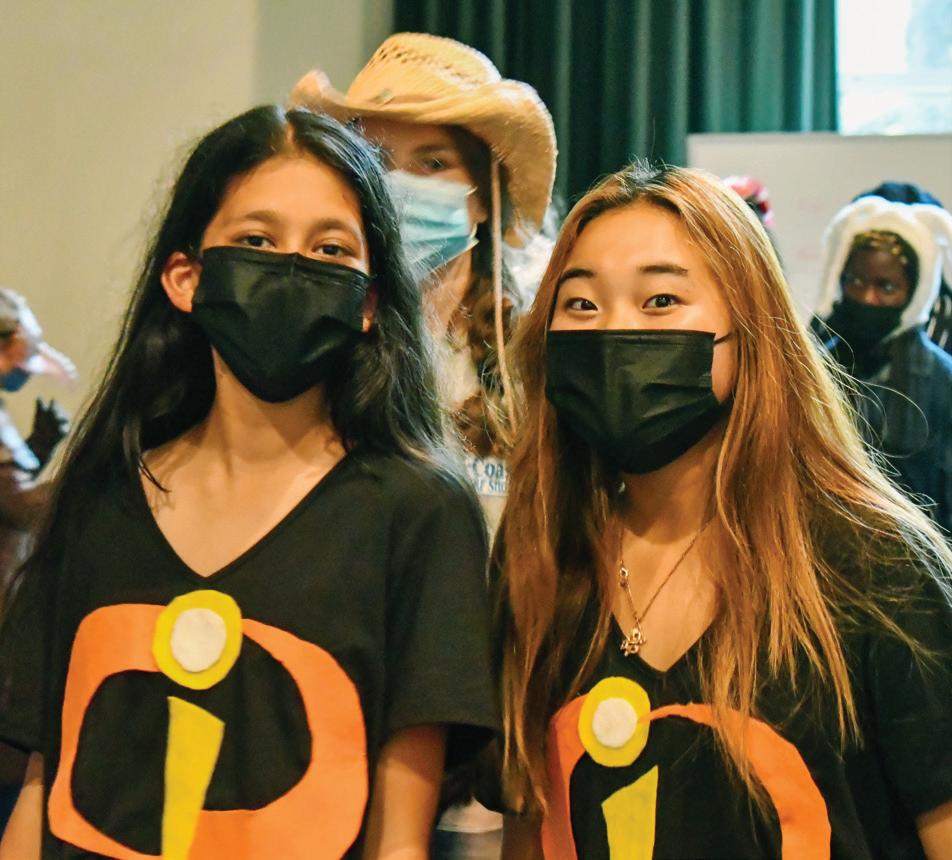



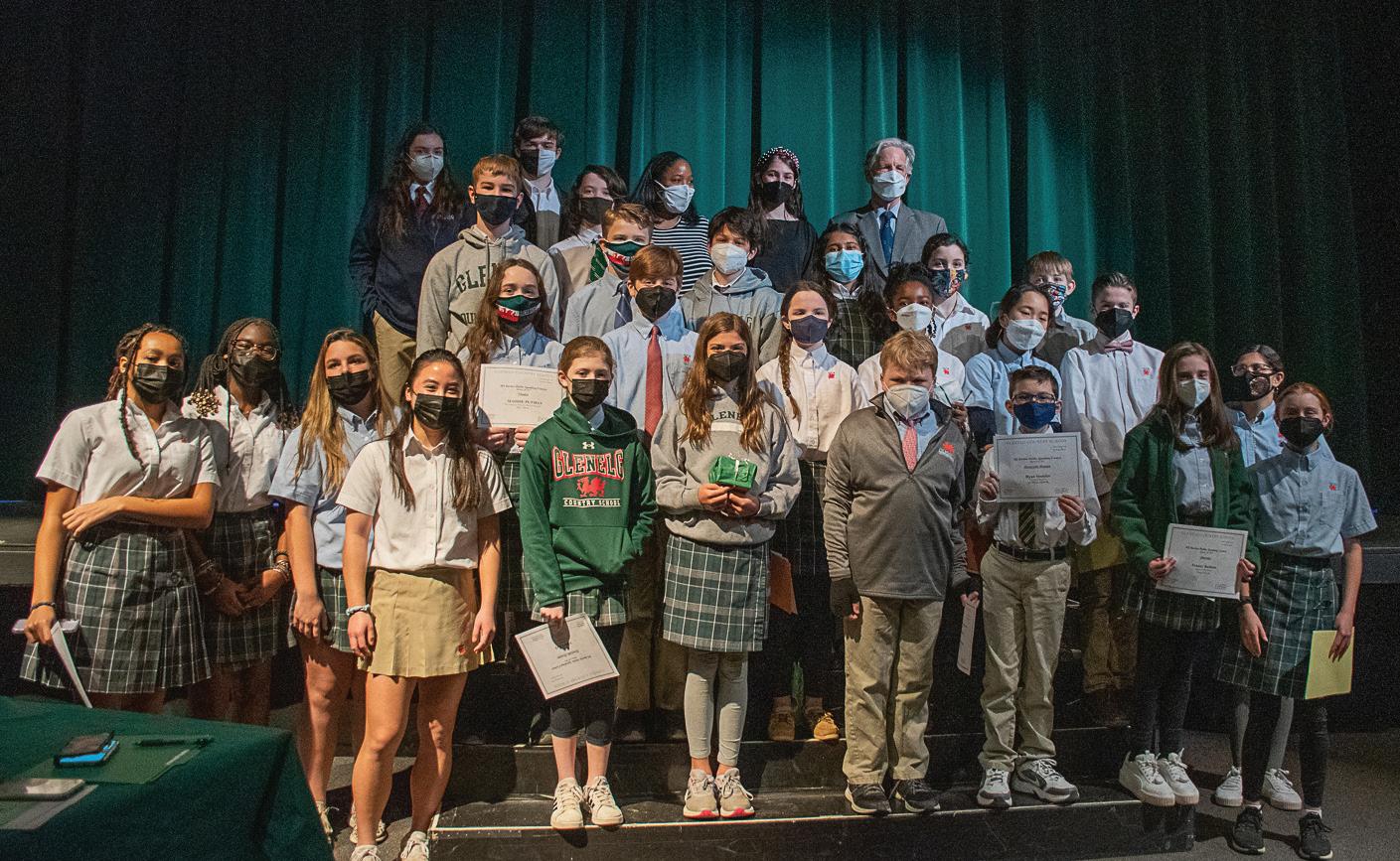
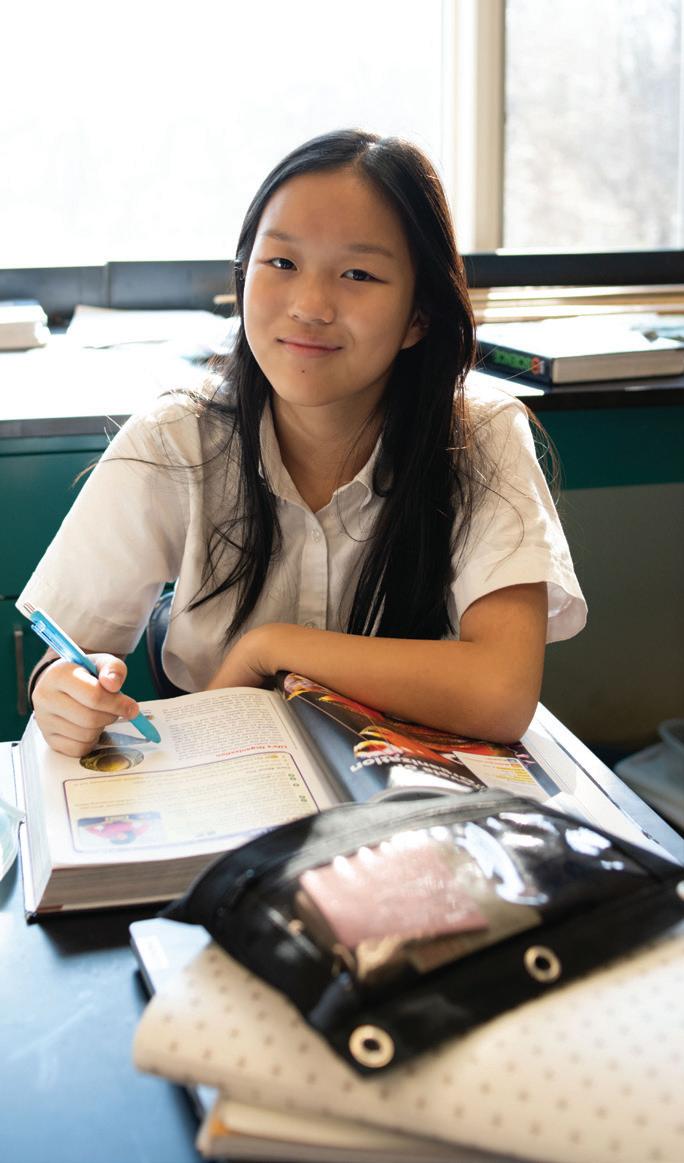









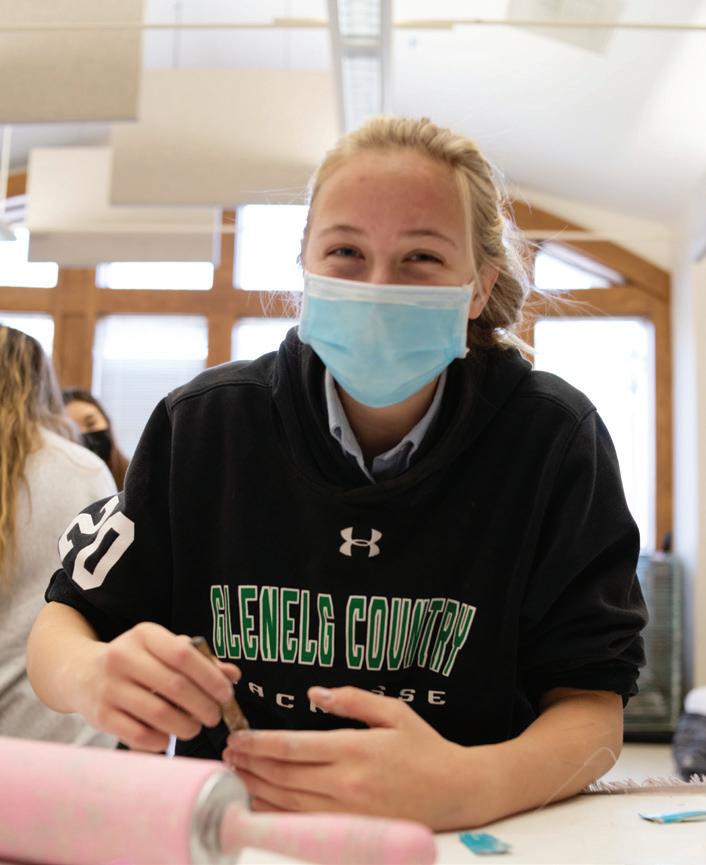
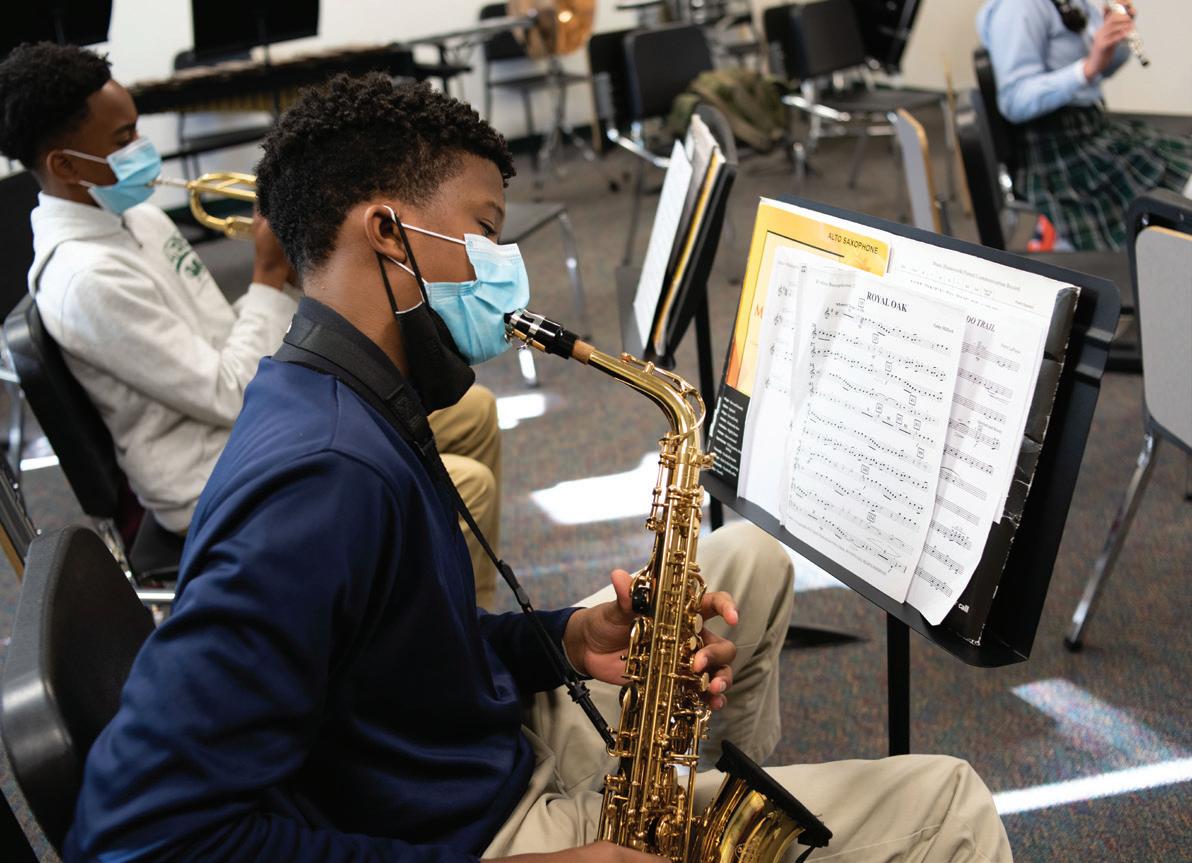


FACULTY SPOTLIGHT Kim Roenigk
For this artist, teaching at GCS is all in the family.
PLEASE GIVE US SOME BACKGROUND ON YOURSELF AND YOUR EXPERIENCE.
My educational background is fine arts. I earned my master’s in fine arts from Yale University and my bachelor’s degree in fine arts from the Maryland Institute College of Art (MICA), both with a focus on painting. I’ve worked as a freelance artist and as a teacher. I painted murals and decorative finishes for The Ivy Hotel in Baltimore, and I’ve taught as adjunct faculty at Johns Hopkins University and MICA.
WHY TEACHING?
I enjoy teaching. Kids are fun to be around. I like that most middle school students are game to try new things. I like being part of a community. The camaraderie with the middle school faculty is unusually strong, where freelance work is solitary. Teaching offers a schedule that’s very conducive to parenting. When my children were young, our schedules were in sync with holidays and summers. I liked that. Teaching has been a natural fit since then.
WHAT BROUGHT YOU TO GCS?
I came to Glenelg Country School (GCS) through my son and some neighbors. My son taught in the Middle School and my neighbors’ kids attended GCS. I wanted to work close to my home. When I heard that GCS needed an art teacher, I applied.
WHAT IS ONE OF THE MOST REWARDING MOMENTS AS A TEACHER?
There have been many rewarding moments! This past summer, a former student asked if she and her two young sons could spend the day with me. We spent an afternoon talking and playing with her kids. I really enjoy it when former students contact me and want to get together for a visit and chat.
HOW HAS THE PANDEMIC CHANGED YOUR APPROACH TO TEACHING? ANY ADVANTAGES?
The pandemic was very difficult because a considerable part of the Middle School art program is the studio experience and exposure to many different materials. A positive from the pandemic is that you really can do a lot with paper and pencil. Limitations and necessity can force you to invent.
WHAT ADVICE DO YOU HAVE FOR STUDENTS LEARNING IN A PANDEMIC?
Get away from your devices, take a walk in the woods, and spend some time daydreaming.

